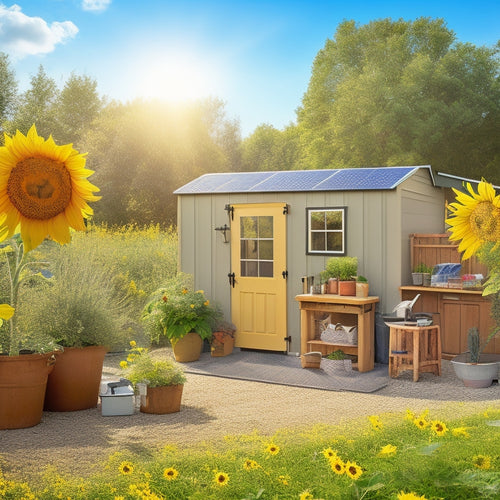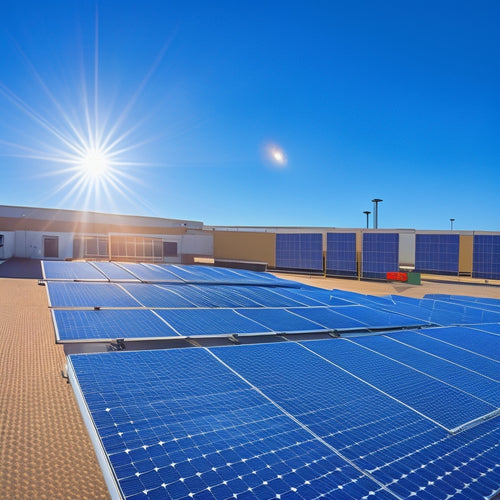
Insulating Your Home With the Right Materials
Share
When insulating your home, choosing the right materials is essential for energy efficiency and cost savings. Consider the R-value of insulation products; higher values indicate better thermal resistance. Fiberglass, spray foam, cellulose, and foam boards each have distinct benefits appropriate for different climates. For instance, spray foam excels in areas that require superior air sealing. Also, proper insulation improves indoor air quality by reducing pollutant infiltration and moisture buildup. By aligning your insulation choice with your local climate and specific needs, you can enhance comfort and sustainability in your home. More observations await on optimizing your insulation strategy.
At a Glance
- Choose insulation materials based on R-values to ensure optimal thermal resistance and energy efficiency for your home.
- Consider local climate conditions when selecting insulation types to maximize performance and comfort throughout the year.
- Evaluate long-term savings from different insulation options, as effective materials significantly reduce heating and cooling costs.
- Select eco-friendly insulation options, like cellulose, to improve indoor air quality and minimize environmental impact.
- Invest in enhanced ventilation systems to maintain air quality while ensuring energy efficiency in your home.
Energy Efficiency and Savings
When considering insulation, it's crucial to evaluate cost-effective options that provide the best long-term energy savings.
By choosing the right materials and installation methods, you can greatly reduce your heating and cooling costs. This not only enhances your home's energy efficiency but also leads to substantial savings over time.
Additionally, incorporating energy-efficient practices, such as utilizing renewable energy sources, can further complement your insulation efforts and reduce overall energy demand.
Cost-Effective Insulation Options
How can you maximize energy savings while minimizing costs? To achieve this, consider cost-effective insulation options that employ recycled materials and innovative solutions.
Conduct a thorough cost analysis to understand your budget and potential savings. Look into various installation techniques that can enhance efficiency while keeping costs low.
DIY options often provide a hands-on approach to insulation, enabling you to take control of your home's energy efficiency. You can access local resources for materials, ensuring you find affordable and sustainable options.
For instance, many communities offer programs that focus on material sourcing, allowing you to acquire insulation that's both cost-effective and environmentally friendly.
Additionally, don't overlook available government incentives that can further offset your expenses. Many states provide rebates or tax credits for using energy-efficient insulation materials.
These incentives can greatly reduce your upfront costs while enhancing your home's comfort.
Long-Term Energy Savings
Investing in cost-effective insulation options not only addresses immediate budget concerns but also sets the stage for considerable long-term energy savings. By effectively minimizing energy consumption, you can enhance your home's efficiency and comfort. Proper insulation limits heat loss and mitigates thermal bridging, which is the transfer of heat through materials that aren't well insulated.
To illustrate the savings potential, consider the following table:
| Insulation Type | Estimated Annual Savings |
|---|---|
| Fiberglass Batts | $300 |
| Spray Foam | $600 |
| Cellulose | $400 |
| Rigid Foam Boards | $500 |
Choosing the right insulation type not only reduces your monthly energy bills but also contributes to a more sustainable living environment. Over time, these savings can add up considerably, allowing you to reinvest in other areas of your home or lifestyle. By understanding the long-term benefits of insulation, you can make informed decisions that enhance your freedom to live comfortably without excessive energy costs.
Improved Indoor Air Quality
Insulating your home effectively reduces pollutant levels by minimizing the infiltration of outdoor contaminants.
Additionally, incorporating a battery backup system can guarantee that your ventilation systems remain operational during power outages, contributing to consistent air quality.
By incorporating enhanced ventilation systems, you can further improve indoor air quality, guaranteeing a steady flow of fresh air while controlling humidity and airborne particles.
This combination not only promotes a healthier living environment but also contributes to overall comfort and well-being.
Reduced Pollutant Levels
Why should you care about improved indoor air quality? The air inside your home can be more polluted than the air outside, largely due to various pollutant sources, such as dust, mold, and volatile organic compounds (VOCs) emitted from furniture and cleaning products.
By selecting the right insulation types, you can considerably reduce these pollutant levels and create a healthier living environment.
Insulation acts as a barrier, preventing outdoor pollutants from seeping indoors while also minimizing the release of harmful substances from building materials. For instance, using fiberglass or foam insulation can effectively limit moisture buildup, thereby discouraging mold growth.
Additionally, certain insulation materials are designed to reduce the emission of VOCs, contributing to improved indoor air quality.
Incorporating high-quality insulation not only enhances the comfort of your home but also supports your desire for freedom from health risks associated with poor air quality.
Enhanced Ventilation Systems
Effective indoor air quality hinges on the implementation of enhanced ventilation systems, which play a crucial role in maintaining a healthy living environment.
By adopting appropriate ventilation strategies, you can greatly improve air circulation within your home, ensuring that stale air is efficiently replaced with fresh, filtered air.
Consider systems like balanced ventilation, which combines both supply and exhaust methods. This approach not only optimizes air exchange but also mitigates energy loss.
Demand-controlled ventilation is another effective strategy that adjusts airflow based on occupancy and air quality levels, enabling you to maintain comfort while minimizing energy consumption.
Additionally, incorporating mechanical ventilation systems, such as heat recovery ventilators (HRVs), can further enhance air quality without compromising thermal efficiency.
These systems capture heat from outgoing air to pre-condition incoming air, creating a controlled environment that prevents excess humidity and mold growth.
In essence, your choice of ventilation strategies directly impacts your home's indoor air quality.
Material R-Values and Performance
Understanding R-values is essential for evaluating the effectiveness of insulation materials in your home. Higher R-values indicate better thermal resistance, which can greatly impact your energy efficiency and comfort.
By comparing different insulation materials, you'll be better equipped to choose the best option for your specific needs. Additionally, considering the long-term savings from improved insulation can enhance your overall energy independence energy-saving opportunities.
This can lead to a more sustainable and cost-effective home environment.
Understanding R-Value Importance
When it comes to insulating your home, grasping the significance of R-value is fundamental for achieving ideal energy efficiency. R-value measures a material's resistance to heat flow; the higher the R-value, the better the insulation performance. However, it's important to clear up some R-value misconceptions. Many homeowners assume that a higher R-value always means superior insulation, but factors like installation quality and material type play significant roles too.
R-value testing is the process used to measure these values accurately, ensuring you make informed choices about your insulation. Understanding these values can enable you to create a more energy-efficient living space.
Here's a quick reference table to help you:
| Insulation Type | Typical R-Value Per Inch | Common Misconceptions |
|---|---|---|
| Fiberglass Batts | 2.9 - 4.3 | It's always the best |
| Foam Board | 4.0 - 6.0 | More thickness is better |
| Cellulose | 3.1 - 3.7 | It's not as effective |
Comparing Insulation Materials
Evaluating different insulation materials reveals significant variations in R-values and overall performance, impacting your home's energy efficiency.
When considering insulation types, you'll encounter fiberglass, foam board, cellulose, and spray foam, each with distinct characteristics. For instance, fiberglass typically has an R-value ranging from 2.9 to 4.3 per inch, making it a cost-effective option but less efficient compared to other materials.
In contrast, spray foam insulation boasts an impressive R-value of 6 to 7 per inch, providing superior air sealing and thermal resistance.
Material comparisons show that cellulose, derived from recycled paper, offers an R-value of about 3.2 to 3.8 per inch and is an eco-friendly choice. However, it can settle over time, diminishing its effectiveness.
Foam board insulation, with an R-value of approximately 5 to 6.5 per inch, excels in applications requiring moisture resistance.
Ultimately, the right choice depends on your specific needs, budget, and environmental considerations.
Selecting Based on Climate Zone
When selecting insulation for your home, it's essential to take into account your local climate needs.
Different materials perform variably across climate zones, affecting energy efficiency and comfort.
By understanding these factors, you can make informed choices that enhance your home's insulation performance.
Additionally, incorporating financial benefits of renewable energy systems can further improve your home's energy efficiency and reduce overall costs.
Understanding Local Climate Needs
Selecting the right insulation for your home hinges on a keen understanding of your local climate zone. Each zone presents unique challenges and opportunities for climate adaptability.
For instance, if you live in a region with extreme temperature fluctuations, you'll need insulation that effectively balances heat retention in winter and cooling in summer. This is where seasonal insulation becomes vital.
In warmer climates, focus on materials that prevent heat gain while allowing moisture control, like reflective barriers or foam boards. Conversely, in colder areas, go for thicker insulation materials, such as fiberglass or cellulose, which can trap heat efficiently.
To guarantee your insulation meets local conditions, it's essential to take into account not just temperature but also humidity levels, wind patterns, and precipitation.
Each of these factors can influence your insulation choices considerably.
Material Performance in Zones
Understanding the performance characteristics of different insulation materials is essential for achieving energy efficiency in various climate zones. Each zone presents unique challenges, such as temperature extremes and humidity levels, which influence your insulation choices.
In colder climates, materials with high R-values, like spray foam or fiberglass, can minimize thermal bridging, preventing heat loss through structural elements.
In warmer, humid areas, focus on materials that excel in moisture control. Cellulose or mineral wool can help manage humidity while providing effective insulation. These materials resist mold growth and improve indoor air quality, contributing to a healthier living environment.
Additionally, consider reflective insulation in hot climates; it can reduce heat gain by reflecting radiant energy away from your home.
Long-Term Durability and Resilience
When choosing insulation, you need to contemplate the lifespan of the materials involved.
Different insulation types, such as fiberglass, foam, or cellulose, each have varying durability and resistance to environmental factors.
Understanding these aspects will help you make informed decisions that guarantee your insulation remains effective over time.
Material Lifespan Considerations
Choosing the right insulation material involves evaluating its long-term durability and resilience against various environmental factors. Understanding material deterioration can help you gauge how often you'll face replacement frequency and the associated costs. Consider insulation options with a longer installation lifespan to minimize maintenance requirements and maximize your investment.
Here's a comparative table to illustrate key material lifespan considerations:
| Material Type | Lifespan (Years) |
|---|---|
| Fiberglass | 20-30 |
| Spray Foam | 20-30 |
| Cellulose | 20-30 |
When selecting, also think about environmental impact and recycling options. Some materials can be repurposed, reducing waste. Warranty considerations can provide additional peace of mind; verify you read the fine print. Additionally, be aware of thermal bridging, which can affect the insulation's overall effectiveness over time.
Frequently Asked Questions
What Are the Environmental Impacts of Different Insulation Materials?
When evaluating insulation materials, consider their ecological footprint and the insulation lifecycle. Each type has varying environmental impacts, from production to disposal. You'll want to choose options that minimize harm while maximizing energy efficiency.
How Can I Tell if My Insulation Needs Replacement?
To determine if your insulation needs replacement, check insulation performance indicators like R-value, moisture damage, or pest infestations. Typically, insulation lasts 15-30 years; if it's nearing the end, consider upgrading for better efficiency.
Are There Any DIY Insulation Options Available?
Yes, there are several DIY insulation options available. You can investigate materials like fiberglass, foam boards, or reflective barriers. Each has unique properties, so evaluate your space and needs before choosing the best insulation materials.
What Is the Average Cost of Professional Insulation Installation?
You might think insulation installation costs are astronomical, but they vary widely. Installation factors like insulation types and your home's size typically range from $1,500 to $3,000, offering significant energy savings in return.
How Does Insulation Affect Home Resale Value?
Insulation markedly enhances your home's resale value by improving energy efficiency, making it more appealing in the resale market. Buyers appreciate insulation benefits, which can lead to quicker sales and potentially greater offers.
Explore More
Incorporating the right insulating materials can greatly enhance your home's energy efficiency, leading to savings of up to 30% on heating and cooling costs. By selecting insulation with appropriate R-values for your climate zone, you not only improve indoor air quality but also guarantee long-term durability. Remember, investing in quality insulation today can pay off in both comfort and finances tomorrow. With the right choices, you're not just insulating your home; you're building a more sustainable future.
Related Posts
-

Building an Emergency Backup Solar Power System in 5 Essential Steps
Building an emergency backup solar power system involves five key steps. First, assess your daily energy needs to ide...
-

Key Components of a Reliable Emergency Power Supply System
A reliable emergency power supply system requires several key components. You need proven performance metrics to guar...
-

Essential Solar Panel Mounts for Commercial Properties
When it comes to essential solar panel mounts for your commercial property, durability and wind resistance are key fa...


